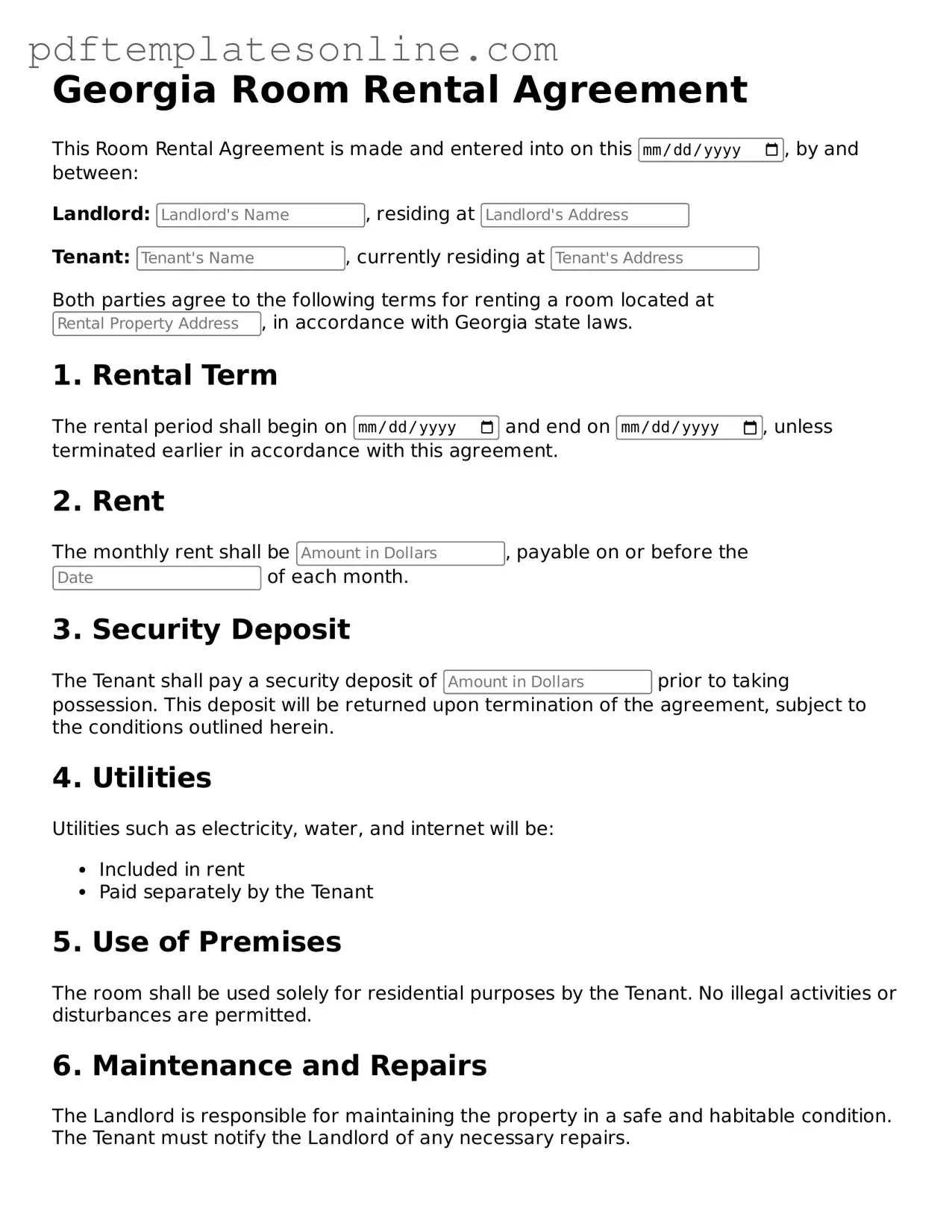Filling out the Georgia Room Rental Agreement form can be straightforward, but many people make common mistakes that can lead to confusion or legal issues. One frequent error is failing to provide accurate personal information. Tenants and landlords must ensure that names, addresses, and contact details are correct. Any inaccuracies can lead to disputes later on.
Another mistake involves not specifying the rental term clearly. The agreement should clearly state the start and end dates of the rental period. Leaving this information vague can create uncertainty about the duration of the lease, which may lead to misunderstandings between the parties involved.
Many people overlook the importance of detailing the rental amount and payment terms. It is crucial to include the exact rent amount, due dates, and acceptable payment methods. Without this information, tenants may not know when or how to pay, and landlords may face challenges in collecting rent.
Additionally, failing to outline the security deposit terms is a common oversight. The agreement should specify the amount of the deposit, conditions for its return, and any deductions that may apply. This clarity helps protect both parties and minimizes potential disputes regarding the deposit.
Some individuals neglect to include information about utilities and maintenance responsibilities. The agreement should clarify who is responsible for paying utilities and maintaining the property. This prevents misunderstandings and ensures that both parties are aware of their obligations.
Another frequent mistake is not addressing the rules regarding pets. If pets are allowed or prohibited, this should be clearly stated in the agreement. Ambiguity can lead to conflicts, especially if a tenant brings a pet without prior consent.
People often forget to include a clause about termination and renewal of the lease. Clear guidelines on how to terminate the agreement or renew it can save both parties from future complications. This information should cover notice periods and any conditions that must be met for renewal.
Ignoring the need for signatures is a critical error. Both the landlord and tenant must sign the agreement for it to be legally binding. Without signatures, the document may not hold up in court if disputes arise.
Lastly, many individuals fail to keep a copy of the signed agreement. It is essential for both parties to retain a copy for their records. This can provide valuable evidence in case of disagreements or misunderstandings in the future.
